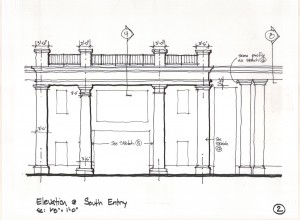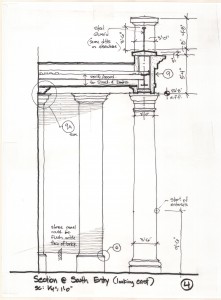With his practiced skills and extensive research into understanding classical proportions, we consider Steve Emer our in-house expert on the subject. His design experience using classical elements began with a client who insisted the design of his new home draw clear inspiration from Georgian architecture – specifically, the buildings of historic Colonial Williamsburg. While early colonial builders were not overly sophisticated and lacked access to many of the refined construction elements available in Europe, they still relied on classical systems of proportioning from antiquity.
In order to fulfill his client’s desires, Emer immersed himself in books written by Renaissance architects Vitruvius, Vignola, Palladio and others to grasp the principles of correctly sizing columns, entablatures, cornices and all related shapes that comprise these elements – a subject seldom taught in contemporary architecture school curricula. Lessons learned from Vitruvius have helped Steve on countless projects at MMA over the years, including recent exterior refinements for a Student Center renovation at Western Kentucky University.
Steve suggests it doesn’t cost more to make sure a building’s scale and proportions are correct. On the other hand, using materials that cost a lot of money with unsatisfactory results can be hugely disappointing, to many for the life of the building. Without realizing it, most people have an innate sense of proportional correctness. The proportioning systems developed so long ago have become intrinsically familiar to us. Steve noted “when detailing traditional building elements, architects are best served by paying close attention to the guidelines from historical precedent… otherwise, the results will invariably look odd.” In terms of architectural fundamentals, Steve’s passion serves to remind all of us how important it is to invest the time to get it right.


